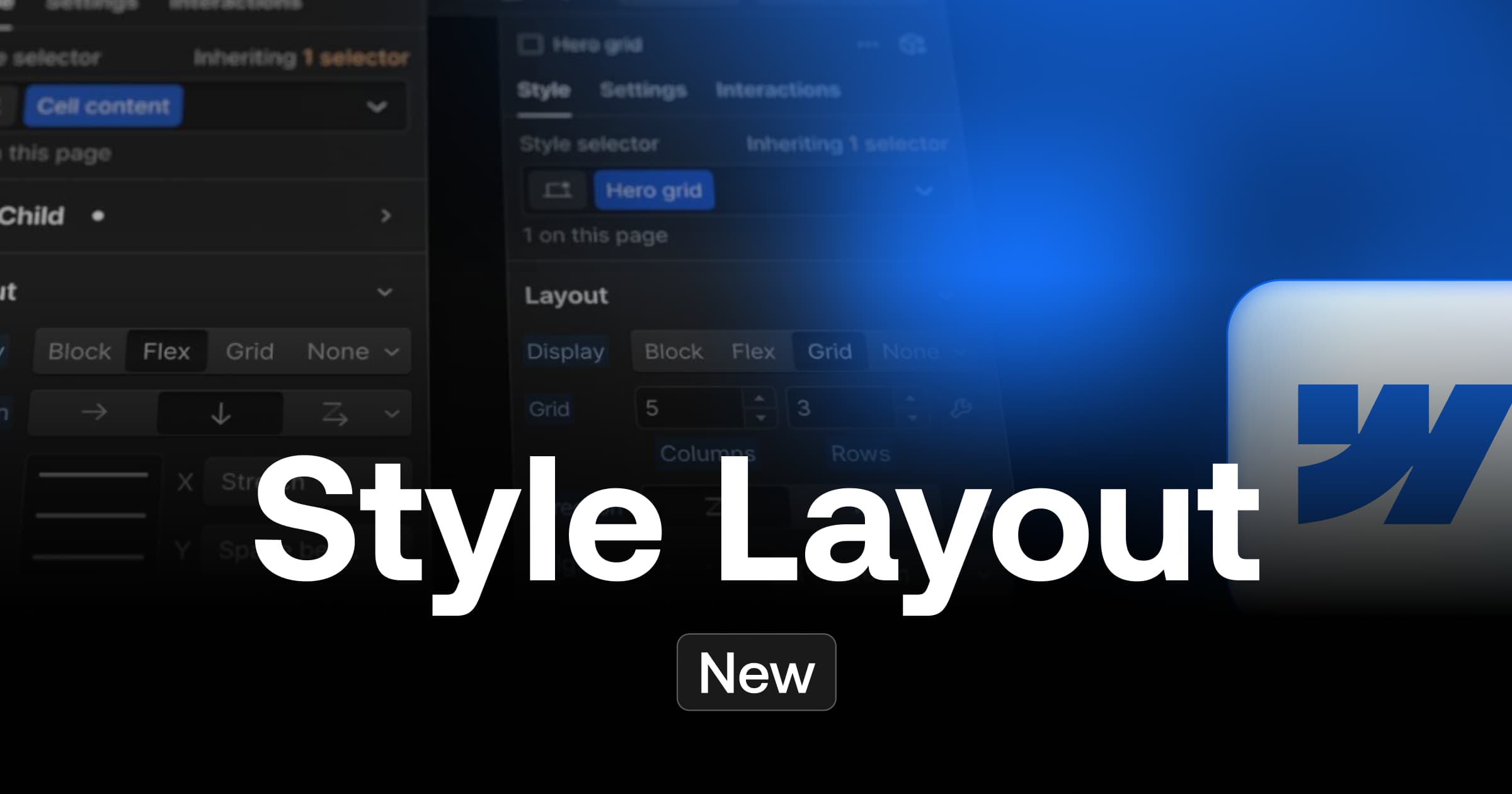Search is a crucial element of any website. It enables your visitors to find the information they're looking for quickly and efficiently.
In this article, we'll explore three ways of adding search functionality to your Webflow site: using an external integration, such as Algolia or Jetboost, and using Webflow's native functionality. We'll help you understand the benefits of each method and how to implement them.
Why integrate a search function into your Webflow site?
Before going into detail, it's essential to understand why it's so important to have a search bar on your site. A well-configured search bar can have a significant positive impact on your site in many ways.
- Beneficial for your SEO : A search function can help improve your SEO. Google and other search engines value websites that offer a quality user experience, and a well-designed search function is part of that.
- Improve user experience : A search bar enables your users to quickly find the information they're looking for, enhancing their overall experience on your site.
- Increase your conversion rate : Effective search can help increase your conversion rate by making it easier for your visitors to discover your products or services.
Now that you understand why it's so important to have a search function on your site, let's explore the different ways you can integrate it into your Webflow site.
1. Two external tools
1.1 Jetboost: Boost your Webflow project
Jetboost is a popular external tool for Webflow that lets you add a real-time search function to your site. With Jetboost, you can fully customize the look and behavior of your search bar. Integrating Jetboost into your Webflow site is relatively straightforward and requires no coding skills.
Here's how Jetboost benefits you:
- Real-time search: Jetboost offers real-time search for your CMS collections. When users start typing in the search bar, results are displayed instantly, without the need to reload the page. This enables your visitors to quickly find the information they're looking for, and enhances their browsing experience.
- Relevant results: Jetboost delivers precise, relevant search results. You can configure search criteria to take into account different fields, such as titles, descriptions or tags. As a result, users get results that correspond exactly to their queries, increasing visitor satisfaction.
- Advanced search filters: Using Jetboost, you can add advanced search filters to your results. This allows users to refine their search based on different attributes, such as category, date, or any other criteria specific to your content. Advanced search filters offer a more personalized user experience and make it easier for visitors to find the information that interests them.
- Easy to install: Jetboost makes it very simple to install the search functionality on your Webflow site. Simply copy and paste a snippet code provided by Jetboost into the appropriate section of your site. You don't need any in-depth technical knowledge to set up real-time search with Jetboost.
- Customize your search bar and results in Webflow: You can shape your search bar and results as you like, using the multiple design features of the Webflow designer.
- Performance tracking: Jetboost provides detailed statistics on searches carried out on your site. You can track the most popular search terms, the most clicked results and other relevant metrics. This information helps you understand your users' behavior and optimize the relevance of your search results.
To go further on the simplified installation of Jetboost, with the app in Webflow, simply add it to one of your projects.

You will then be redirected to the dashboard of your Jetboost account, where you can add a booster. We'll choose"Real-Time List Search". Once created, all we need to do is fill in the various fields in Jetboost to customize the features of our search bar (which collection? which filter fields? Exact or flexible search? etc.). Each step is ultra-guided for easy implementation.

The main drawback of Jetboost is that it only searches for dynamic elements, and the price can be high if we want to add several boosters.
However, by using Jetboost for search on your Webflow site, you offer an enhanced user experience, enabling your visitors to quickly find the information they need. Real-time search, relevant results, advanced filters and ease of installation make Jetboost an ideal choice for enhancing the search functionality of your Webflow site.
1.2 Algolia: Powerful custom search
Algolia is a powerful solution for integrating an advanced search function into your Webflow site. It is renowned for its ultra-fast search speed and ability to handle large amounts of data efficiently. While integrating Algolia may require additional technical skills compared to Jetboost, it also offers greater flexibility and control over the search process.
When you use Algolia, you benefit from advanced features such as typo-tolerant search (which compensates for typing errors), real-time search, faceted search (which allows users to filter results by specific attributes) and much more. You can also customize the search experience by adapting the appearance of results, the way results are sorted and displayed, and the relevance criteria.
Integrating Algolia into your Webflow site requires an additional step: configuring data indexing. This involves defining the data sources to be indexed, defining the fields relevant to the search and sending this data to Algolia. You can automate this process using tools such as Zapier or by writing a custom script.
It's important to note that Algolia integration can be more complex and requires a certain amount of technical expertise. It is more suited to experienced developers than to no-code users. One of the most complex parts of Algolia installation concernsdata indexing. You need to determine the data sources to be indexed, extract the data and send it to Algolia to be processed and made available for search. This step may require a thorough understanding of APIs and methods for sending data.
What's more, customizing the appearance and behavior of search results with Algolia can also be more advanced. You need a good knowledge of programming languages and Web technologies to customize aspects such as sorting, filtering, highlighting results and adapting the user interface to your specific needs. This often involves writing custom JavaScript code to take full advantage of Algolia's features.
However, if you're an experienced developer or have strong technical skills, Algolia integration can give you absolute flexibility and control over search on your Webflow site. You can customize every aspect of the search experience to your specific needs, which can be particularly advantageous for complex websites or projects requiring highly personalized search.
It's advisable to have a good understanding of the technical requirements and the necessary skills before embarking on Algolia integration. If you're a no-code user or are looking for a more user-friendly solution for searching your Webflow site, alternatives such as Jetboost or Webflow's native search may be more suitable, offering ease of installation and a simplified user interface for non-developers.
Once you've set up Algolia, you can enjoy a fast, fluid search experience for your users. Instant, relevant search results enable visitors to quickly find the information they're looking for, improving their engagement and satisfaction with your site.
Although Algolia may require a little more time and effort to set up, it offers a flexible and powerful solution for search on your Webflow site. If you're looking for deep customization, efficient data management and optimal search performance, Algolia is a great option to consider.
There are integrations with tools like wordpress right now, so maybe a simplified Webflow integration will come soon!
2. Webflow's native search bar
If you prefer not to use an external tool, Webflow also offers a native search function that you can use.
2.1 How to integrate Webflow native search?
To integrate Webflow's native search, all you need to do isadd a search element to your page (for it to work on your website afterwards, you'll need to subscribe to at least one CMS plan).
When you add a search bar to your page, you also "unlock" the"Search Results" page in utility pages (404, password) for the display of search results.

2.2 Configuration options for your site
Webflow offers a range of configuration options for customizing the search experience on your site. For example, you can choose to block certain pages, divs or elements from search results. This can be particularly useful if you have pages or content elements that you don't want to be accessible via search.
To exclude an entire page, you must :
- Go to page parameters
- In "site search settings", click on "Exclude this page from site search results" to exclude the page from search results.

To exclude certain elements of a page from the search, you must :
- Select an element on your page
- Go to element parameters
- In "Search index settings" click on the option to exclude the item from search results

This feature is useful for a more precise search.
Another important aspect of search configuration is managing theindexing of your pages. By default, Webflow updates your site's search index automatically every three days. However, if you've made significant changes to your site and want them to be immediately visible in search results, you can force a manual index update. Manual updates are limited to once every 24 hours.

In the search results page, you have various options for formatting the results display, although you can't fully customize the results content.
The advantages of Webflow's search bar :
- Site-wide filtering (static and dynamic pages)
- Exclude pages or items for search
- Customized search bar and results page
- Native in Webflow (no need for multiple tools, so no extra cost)
Disadvantages of the Webflow search bar :
- No native real-time search
- Precise / exact search
In conclusion,
There are several ways to integrate a search function into your Webflow site, each with its own advantages. Whether you choose to use an external tool like Jetboost or Algolia, or Webflow's native functionality, adding a search bar to your site can greatly enhance your users' experience and help optimize your SEO. Take the time to evaluate each option and choose the one that best suits your needs and those of your users.
Don't forget that the ultimate goal is to provide your users with a smooth and efficient browsing experience on your site. A well-designed and integrated search function can play a key role in achieving this goal.
Ready to take your website to the next level?
Improve your online visibility thanks to Digidop's experience, excellence and reactivity!





.webp)
.webp)

